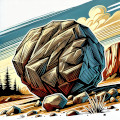How to Navigate in the Wilderness Without GPS
Navigating in the wilderness without a GPS might sound intimidating, but with the right skills, it can actually be quite rewarding. Learning to read the landscape, use a compass, and follow natural signs will help you find your way safely. Here are the essential techniques to navigate without the aid of modern technology...
Using a Compass and Map
The most reliable tools for navigating without GPS are a compass and a topographic map. Before heading out, familiarize yourself with reading contour lines and understanding the map’s symbols. Use the compass to take a bearing, align it with your destination, and follow it to stay on track.
Always take note of prominent landmarks and cross-reference them with your map. This not only confirms your location but also helps you plot a path in the right direction, even if trails become less distinct.
Natural Navigation Techniques
Nature offers a variety of clues to help you navigate. The sun rises in the east and sets in the west, which can provide an approximate sense of direction during the day. Shadows will also move consistently, helping to mark the passage of time and direction.
At night, the stars can guide you — find the North Star by locating the Big Dipper and following the line from the two stars on the outer edge of the dipper’s "bowl." This will lead you to Polaris, which is always pointing north in the Northern Hemisphere.
“The joy of life comes from our encounters with new experiences.”
Understanding Terrain Features
Reading the landscape is one of the most valuable skills for wilderness navigation. Valleys, ridges, and water sources are all important landmarks. When hiking, keep track of these terrain features to know whether you are heading in the right direction. If lost, following a stream downhill will often lead to signs of civilization.
Dead Reckoning
Dead reckoning is a navigation strategy where you keep track of your route by estimating direction and distance traveled from a known point. This can be helpful when visibility is low or when you're unable to use other forms of navigation. Use visual markers and keep a mental log of time and distances to stay oriented.
Marking Your Path
While moving through unfamiliar territory, leave small markers to trace your steps. This can be as simple as placing rocks in a recognizable pattern or tying a brightly colored ribbon to branches. These markers will help you retrace your route if needed and can prevent getting turned around.
Conclusion: Practice Makes Perfect
Navigating without GPS may seem challenging, but with practice, it becomes a rewarding skill that connects you more closely with your surroundings. Practice using a compass and map often, and learn to read the natural signs around you. With experience, you’ll be able to confidently navigate the wilderness without relying on modern technology.
Reply to thread







Discussion
Sep 18th | NatureGuide
I love using natural navigation techniques! The North Star has never let me down.
Sep 12th | Bushcrafter
Great tips on dead reckoning. It’s easy to lose track without some kind of system!